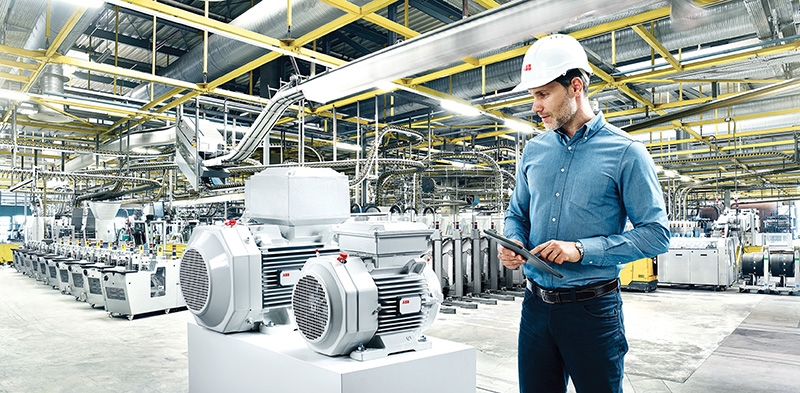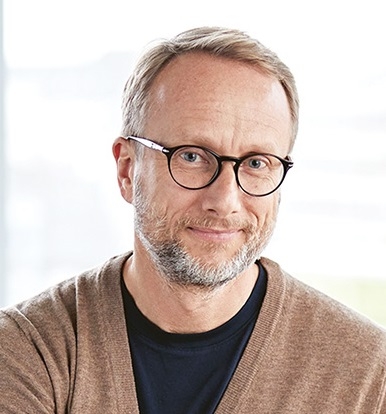Set for the next industrial revolution
 |
| Industry 4.0 tech, such as machine learning and advanced AI systems, is capable of supporting modern industries in production as well as co-ordination |
We are witnessing some of the biggest changes happening to our world that we’ve ever seen. In the beginning, we used muscle and brawn. Back in 1784, the steam engine was invented, and has allowed us to dramatically increase the amount of power we could deploy. That was the First Industrial Revolution – a bevy of productivity in terms of factories, mass producing goods and materials.
 |
| Guido Jouret, chief digital officer of ABB |
Nearly a hundred years later – and our company was quite instrumental in this – we introduced electricity. Steam engines were really powerful but also very big. Electric motors are small, and you can deploy them more widely in many more places. That was the Second Industrial Revolution.
Some people think that the Fourth Industrial Revolution is all about the advent of computing, but actually we’ve had computing in the industrial world going back to the late 1960s.
So what’s different? The Third Industrial Revolution was really the advent of automated digital technology, controlling the electrical systems and controlling the mechanical environments. We are moving from systems that can act and react to systems that can plan and learn.
The introduction of software-defined capabilities, driven by the cloud, and the transformation that this is engendering cannot be overestimated. It is changing the way we produce goods in factories. It is changing the way we carry out transportation. And it is also changing the way we produce energy. This progress over about 250 years has dramatically changed how all of us live.
We need smarter cities
Around 75 per cent of the world’s population will be living in cities by 2050. We need to find smarter ways of providing buildings, and 40 per cent of the energy we produce goes to buildings.
We need to find better ways of transporting goods and people, as 25 per cent of our energy goes to transportation. We need to find a cleaner and greener source of energy, because pollution is causing serious health issues. And we also need to find ways to treat and distribute water in more effective ways.
In California where I live, 20 per cent of all of the energy that we produce goes to moving water. We live in a dry state, but that will be the future in many more parts of the world as well. So we need a new system based on small-scale generation assets that are digitally connected and controlled, and increasingly intelligent. Almost everything we talk about – whether it’s transportation, water, or food – is all driven by energy. In the future, most of that energy will take the form of electricity.
Al and cloud create value
Al applications are needed to make infrastructure smarter. How do we train a forklift to be able to move around inside of the factory without causing damage? We need to create not only the AI, but we need to infuse it with the main expertise we have to tell it about the world. We need a digital twin. Therefore, we are going to see a natural evolution. We first connect the intelligent infrastructure pieces, and then we have some kind of system to monitor it and make sure that it won’t fail.
Half of the food we grow is thrown away or rots before it is consumed. We have manufacturing plants – among the best of them only operate at 45 per cent of their total theoretical output. The electricity grid typically operates at about 40 per cent capacity. So if we get serious about optimising the performance of this industrial infrastructure. We can do much, much better. And lastly, we can unleash all kinds of new and innovative models where we could potentially sell the infrastructure in new and innovative ways.
So how do we get to the cloud? The promise of AI is that it’s going to allow us to have all this smart infrastructure. What we discover is there are two kinds of applications. One, we call the control loop. This is akin to the digital nervous system of a factory or plant a refinery today. They sense, they analyse, and they act.
But there’s another loop – the passive loop for yourself. You analyse and you act, but you’re not controlling the microsecond-level response time. You are perhaps just boosting the energy efficiency of the asset, increasing the yield by synchronising the inputs and the outputs a bit better. The next step is when we recognise that we can make these systems smarter by adding AI. And increasingly, these will be more and more autonomous at the beginning. They are probably at level one autonomy with human beings, doing most of the control and validation. But the next step beyond that will be that these systems become more and more self-sufficient.
People are really good at being flexible, being creative, and adapting to unknown circumstances. The AI is very good at applying a rigorous formula to data that has been trained on that and never tires. It does not have to sleep. And therefore, the best combination is when you put the two together. This combination has been proven to outperform AI alone and humans alone.
In the case of, for example, analysing X-rays to look for cancer, or recognising images in criminology cases - the best combination will be essentially a symbiosis between AI and people.
The biggest development has been the arrival of the Fourth Industrial Revolution, which merges the physical and digital worlds. It is our job to build on the accomplishments of previous advances, which over the last century improved life drastically, and not just in the First World. Life expectancy doubled, hundreds of millions of people were lifted out of poverty, and more people have medical care and access to food and clean water.
But we have paid a price, and now our commitment with Industry 4.0 is to use all the digital tools at our command to expand the benefits of earlier revolutions to even more people while reversing the negative consequences.
That means greening the grid, electrifying transportation, fighting pollution, combating climate change with smarter infrastructure, and helping solve the puzzle of feeding a planet of billions of people when we have run out of arable land.
I am optimistic about AI. For one, we have made tremendous progress in machine learning technology in recent years. But what most people do not realise is that there has been no fundamental improvement in the underlying neural-network algorithms. The models we use today are the same as 40 years ago. But we now have so much more computing power, we can build bigger neural nets. Yet we are still replicating a very primitive approximation of a human neuron.
To give you a sense of the scale of the challenge, consider the computer that plays the game Go. It actually uses a very large server farm, which consumes thousands of watts of power. The average human brain consumes only 60 watts, equivalent to a traditional incandescent light bulb.
However, the brain is not just playing Go, it is managing your mind and body as well. Even with all the progress we are making in AI and machine learning, there is still a fundamental limitation: We are creating systems that are inherently brittle. They can only solve problems that are contained within the set of examples and use cases on which they have been trained.
A good example is the driverless car. If you instruct a US driverless car to never cross a double yellow line in the middle of the road, that works fine initially. But there are so many exceptions or corner cases. What if it gets stuck behind a truck that is not moving because the driver has stepped out to make a delivery? How do you apply judgment here?
Any driver knows the right answer is to inch across the line so that it can look past the truck, and if it does not see oncoming traffic, it can then pass the truck. But these complex issues of judgment and forecasting are beyond the scope of current systems. They are not able to do that.
What the stars mean:
★ Poor ★ ★ Promising ★★★ Good ★★★★ Very good ★★★★★ Exceptional
Themes: Digital Transformation
Related Contents
Latest News
More News
- Main drivers for Vietnam’s digital economy future (December 03, 2025 | 11:35)
- Pivotal stage of growth paves way for rise in M&As (December 03, 2025 | 10:00)
- Positive projections for M&A interest from Thailand (December 03, 2025 | 09:40)
- Manifesting the first line of defence in cybersecurity (December 03, 2025 | 09:00)
- The transformational role AI can play in accounting arena (December 03, 2025 | 08:00)
- Unlocking 5G-AI potential in Singapore (December 03, 2025 | 08:00)
- Data-driven strategies vital for a fast-evolving nation (December 02, 2025 | 09:41)
- Policy to practice: how Vietnam can lead the region (November 26, 2025 | 16:03)
- Mobilising private capital at scale vital for climate battle (November 26, 2025 | 15:36)
- VILAF and Yoon & Yang launch Vietnam - Korea Practice Unit (November 26, 2025 | 15:16)

 Tag:
Tag:





















 Mobile Version
Mobile Version